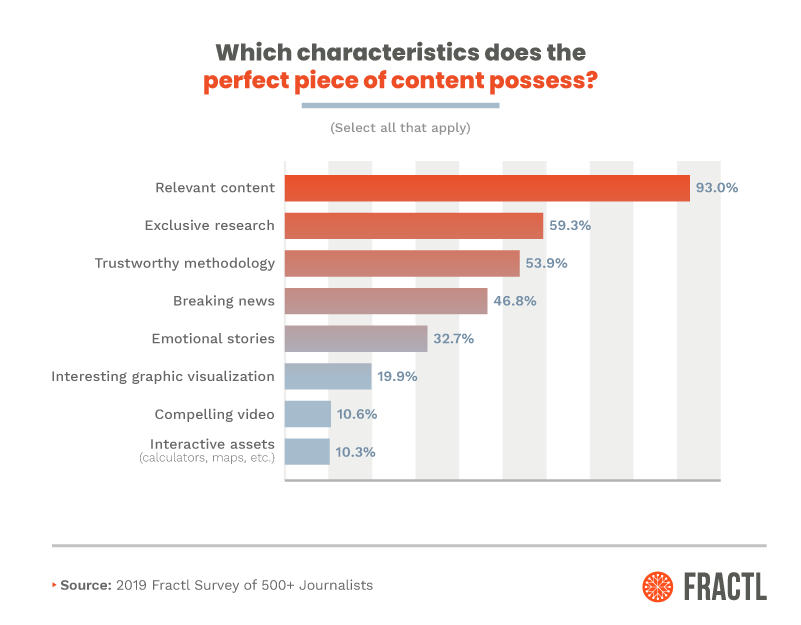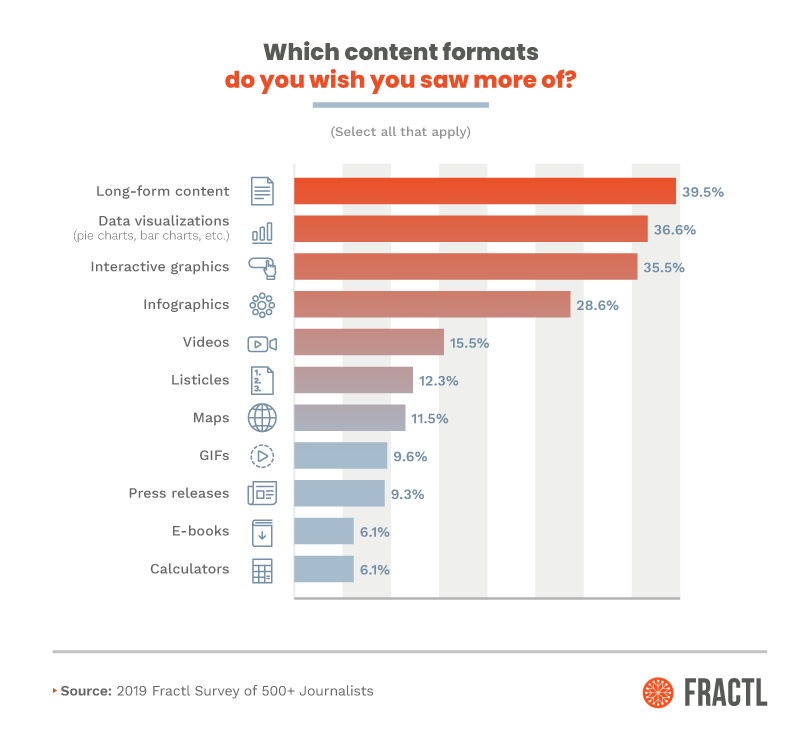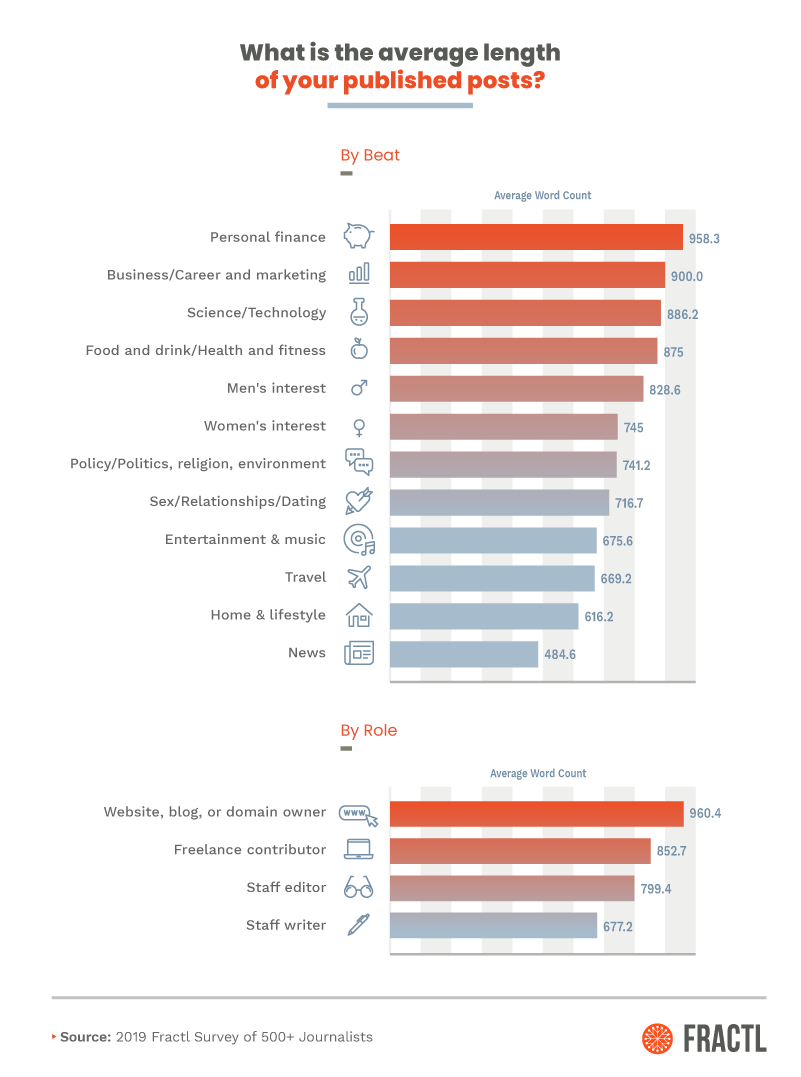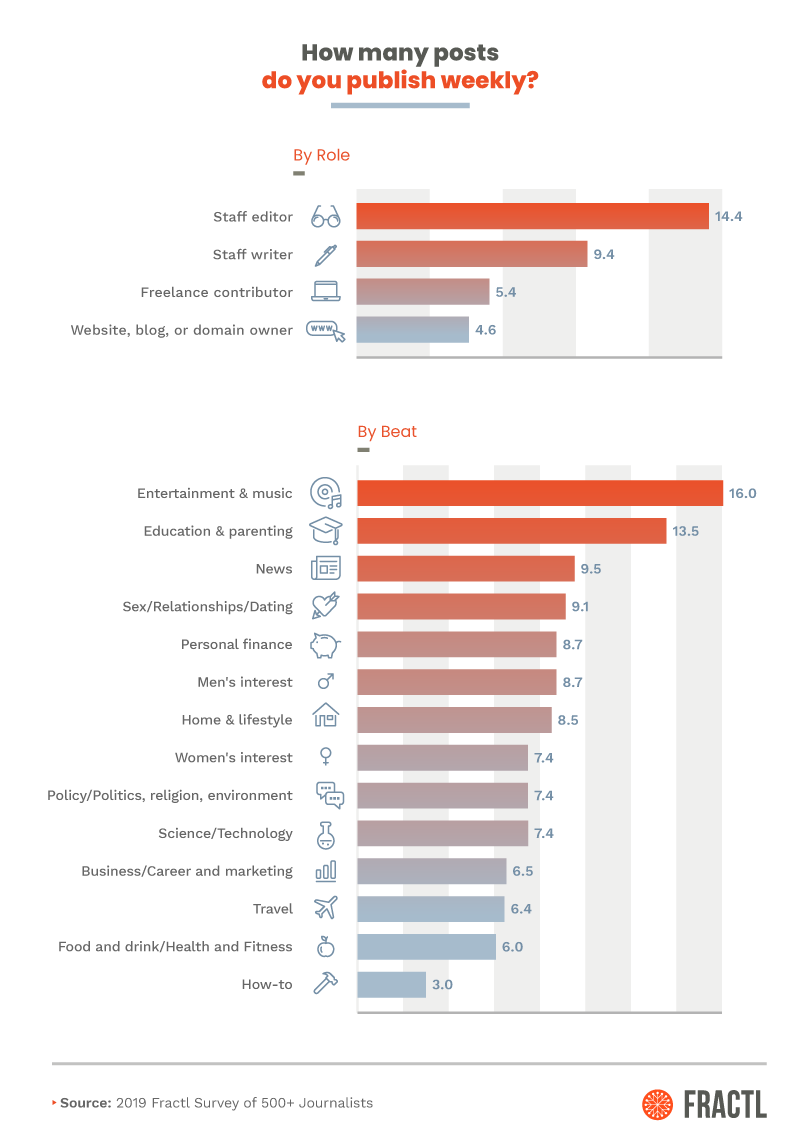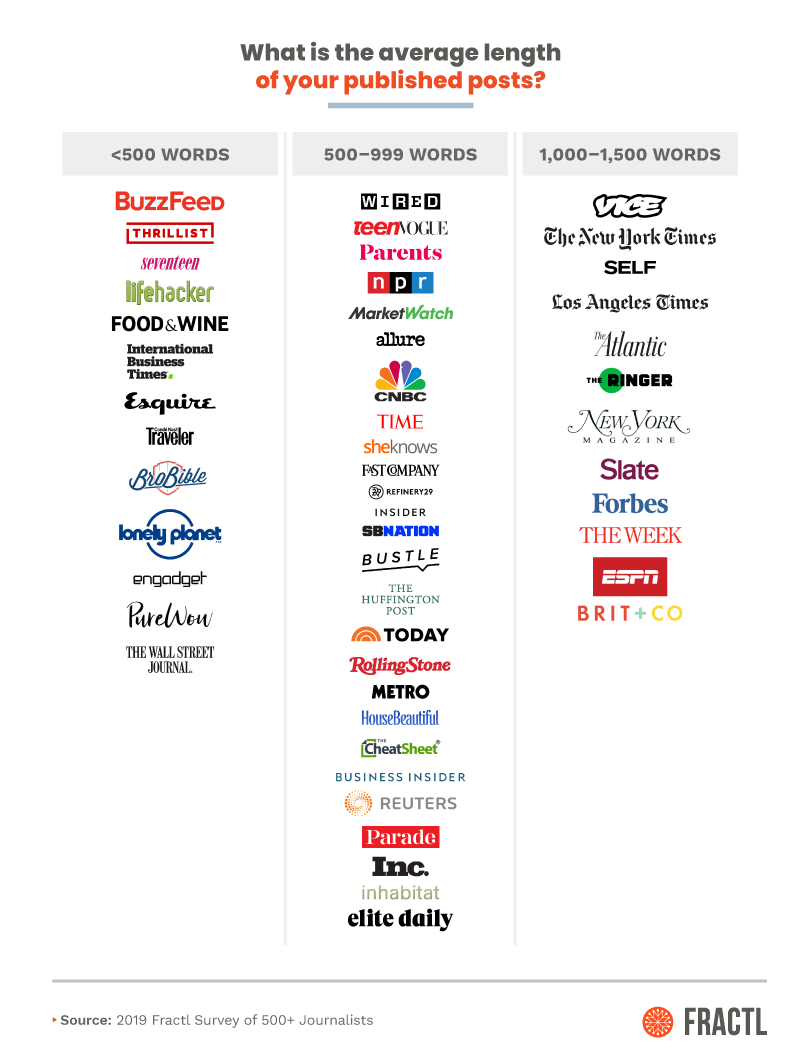In our last and final post about email pitching best practices for 2019, we’re going to share the final piece of the puzzle from a survey of 500+ top-tier journalists, editors, and online publishers.
To recap, here are four posts covering other aspects of survey data, answering questions like:
- How do I craft the perfect subject line for digital PR outreach?
- How many pitches do journalists actually receive daily?
- What are journalists’ biggest pet peeves when it comes to PR?
- How should I pitch writers in the U.K.?
This time, we’re diving into content. What types of content do journalists want to see in their inbox? How many posts do travel journalists cover each week versus personal finance journalists? How long are online writers’ published articles?
Keep reading to discover how to optimize your earned media strategy for the most success.
What characteristics does the perfect piece of content possess?
Without much doubt, the No. 1 quality that journalists look for in the “perfect” piece of content is relevance. This should be a no-brainer, but time and time again, we hear about journalists receiving dozens of irrelevant pitches in their inbox every day.
Other top qualities that journalists like to see in pitched content are exclusivity and a trustworthy methodology.
For something to be exclusive, you generally need to password-protect the page to ensure that no one else can see it except the recipient. This password protection indicates that you trust the journalist. If they know they’re going to be the first to break a story, they will be more inclined to show interest in your content.
As far as having a trustworthy methodology, this is especially true for data-backed projects. Our team at Fractl has extremely high methodological standards for all the projects that we produce, and we have multiple rounds of reviews by different parties to ensure the content is methodologically sound before we publish it or send it to any journalist.
Journalists want to know that if they publish your study’s findings, they aren’t misrepresenting the truth to their audience. If they publish a study that you produced with a shady methodology, they are less likely to trust you in the future.
Which types of content do you publish most often?
When we asked journalists, writers, and online editors about the content they currently publish, they said they most often publish long-form content, listicles, videos, and data visualizations.
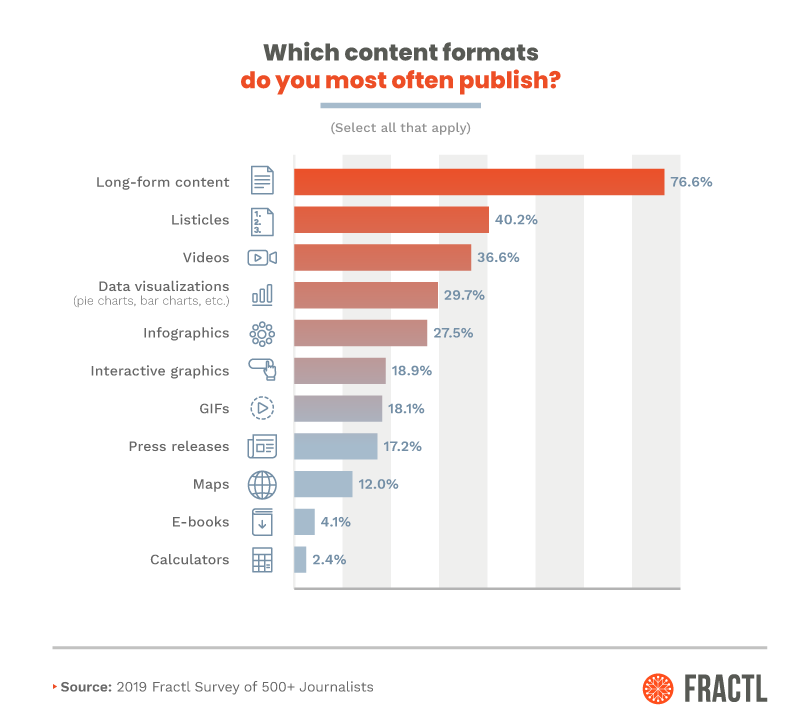
Listicles are everywhere, and that’s no surprise. Emphasis on video has been rampant among news companies for the past few years, so expanding your content to video format would be a good gamble for the future.
Which content formats do you wish you saw more of?
When journalists were asked what they would like to receive from PR professionals, most said long-form content. But good news for all the content creators out there: Journalists agreed that they’d love to see more data visualizations as well.
At Fractl, data visualizations are our bread and butter, so it’s positive reinforcement that publishers are wanting even more of the stuff we’re passionate about creating. In general, data visualizations are actually umbrellas for “interactive graphics” and “infographics,” which is good news for all of us. Based on our data, the infographic is decidedly not dead.
What is the average length of published posts?
The longest articles, by far, seem to be claimed by personal finance writers. Personal finance is among one of the most popular and saturated niches today because, quite simply, there isn’t a person in the world who doesn’t have to think about money every day (or at least once a week).
The second-longest articles seemed to be about business or careers. Just like everyone could use a personal finance tip now and again, pretty much everyone has a job (or wants one). Navigating employment and how to thrive at work are popular topics that require an in-depth look.
We also found that blog owners tended to write the longest articles, while staff writers wrote the fewest words. When pitching people in these roles, consider the length of their articles and adjust your pitch accordingly.
How many posts do you publish weekly?
The average entertainment writer covers 16 stories a week! This comes as no surprise given the sheer amount of celebrity news we are bombarded with every day. Every time Chrissy Teigen writes a tweet, it makes breaking news.
What beat do you primarily pitch? If, for example, you’re pitching content for a travel client lately, you might have a slower placement rate than if you pitched stories that related to relationships or parenting.
What is the average length of posts by Publisher?
How long are BuzzFeed’s posts compared to ESPN’s? How long is content on Lonely Planet? When pitching publishers who have a shorter word count, consider shaping your pitch into a story that might be told in 500 words or fewer. When pitching publishers who only write long-form content, you can pitch them a more complex piece of content.
Going to the source
When it comes to the best practices on how to pitch journalists, there is no better solution than going straight to the source. By asking 500+ top-tier journalists, editors, and online publishers how they want to be pitched, our insights can inform your pitching strategy and increase your placement rates across the board, no matter the vertical.
If you found this valuable, please check out the other four components of this study on pitching journalists:

